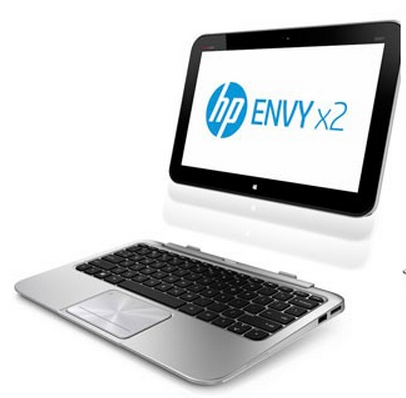
This post is adapted from one that first appeared in the San Jose Mercury News
by Larry Magid
I think my boredom with PCs is about to come to an end.
I’ve been covering the PC industry since IBM introduced its first PC in 1981 and, for the most part, the news coming from PC makers has been pretty ho-hum. The original IBM PC was big news, as was introduction of the Apple Macintosh in 1984. Then came laptops that, over time, got smaller, cheaper and more powerful.
The first tablet PCs from Microsoft were interesting but not very good. Then the iPad caused me to perk up for awhile, as did the many Android tablets that followed, but now even tablets are starting to feel like old news.
But things are about to change again. On October 26th, Microsoft is expected to release its new Windows 8 operating system and PC makers have been busy designing new machines to take advantage of the fact that Windows 8 is optimized for touch screens on desktop machines, laptops, tablets and hybrid devices that serve as both laptops and tablets.

I got a sneak peak at some of the new machines at the IFA trade show in Berlin earlier this month and at the Showstoppers for the Digital Holidays press event in New York last week.
At IFA, Dell introduced the XPS Duo 12 Ultrabook with a screen that swivels between its regular positions as a laptop to a horizontal position to be used as a tablet.
At Showstoppers, Hewlett-Packard showed off a number of Windows 8 PCs, including a convertible laptop/tablet with a removable screen. The Envy X2, which will be out in time for the holidays, looks like a small laptop (it weighs about 3 pounds) but there’s a small latch just above the keyboard that releases the 11.6 inch screen, turning it into a Windows 8 tablet. Using the X2 as a laptop, you can move things around with a traditional trackpad or use your fingers on the touch screen. When you’ve detached the screen, it’s a tablet, which can be used to watch video, run Windows tablet apps or run regular Windows desktop software such as Microsoft Office.
HP isn’t yet saying how long the X2 will run between charges, nor has it set a price or an exact release date. I’m guessing it will start at about $1,000 and come out in time for the holidays.
At CES back in January, Lenovo gave me a sneak peak at laptop with a twist. The IdeaPad Yoga is a laptop with a screen that folds completely backward so that it can function as a tablet. It’s a simple and clever idea. We haven’t seen the Yoga surface since CES but @Lenovo recently Tweeted a picture of the Yoga with “It won’t be long now.”
There is also some progress being made on the desktop front. HP has offered touch-screen all-in-one PCs for years and they haven’t exactly jumped off store shelves. But because of its deep touch integration, HP hopes that Windows 8 will invigorate the touch-screen PC market. To that end, they introduced the Envy 20 and Envy 23 (the number refers to the size of the screen) touch-screen PCs. The Envy 20 will cost $799 and the 23-inch model will be $999 when they are released this fall.
Even Microsoft is getting into the PC hardware business with its Surface PCs that will come out this year. There are two versions. One with an ARM processor runs Windows RT, a stripped down version of Windows that will run apps designed for tablets but not traditional Windows desktop software. The other, called the Surface Pro, will have an Intel processor and be able to run standard off-the-shelf Windows software. The most interesting feature of the Surface is its optional cover with its built-in keyboard. The cover connects to the tablet with a magnet and when you open it, you get access to a very thin (3 mm) and light keyboard.
We’re also starting to see “laptops” that run Google’s Android operating system. At IFA, Lenovo showed of an Android tablet with an optional keyboard docking station. When docked, the Ideatab S2110 looks like a small notebook PC with a full-sized keyboard and a trackpad. Like the HP Envy X2, you can remove the screen to use it as a tablet. The big difference between the HP Envy and the Lenovo IdeaPad is the operating system. Android doesn’t run any Windows apps and isn’t really designed as a PC operating system. Still, there are plenty of Android productivity apps that you can use on this device, and you can do pretty much anything you can do with a PC.
None of these machines is yet on the market, so it’s too early to know if they’re any good or how well they’ll sell. But they are new and different and, to this jaded tech journalist, that’s a welcome development.
Be the first to comment